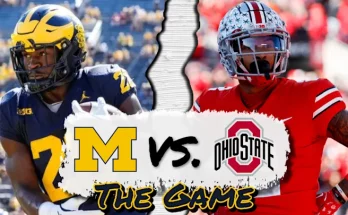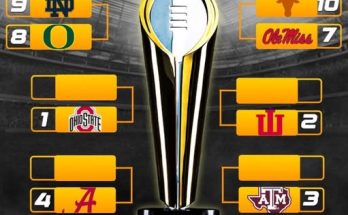LSU quarterback Garrett Nussmeier has always been known for his arm talent, quick release, and ability to process defenses, but this offseason, the redshirt junior is proving he can add another dimension to his game—one that could make him even more dangerous in the SEC. In a recent workout, Nussmeier was clocked at an impressive 21.4 miles per hour during a sprint, a number that not only grabbed the attention of fans but also underscored the explosive athleticism he possesses. For a quarterback whose reputation has been built largely on his ability to read coverages and deliver precise throws, hitting that kind of top-end speed is a reminder that his legs can be just as much of a weapon as his arm. But Nussmeier knows that raw speed alone doesn’t win football games. The offseason emphasis, both from his coaches and himself, is on mastering the art of when and how to use that speed—balancing the temptation to take off with the responsibility of running the offense from the pocket.
The timing couldn’t be more critical. LSU enters the 2025 season with high expectations and a revamped offensive plan that leans on Nussmeier’s experience and decision-making. With Jayden Daniels now in the NFL, the offense belongs fully to him, and that means defenses will adjust their approach. SEC defensive coordinators are known for making life miserable for quarterbacks, often bringing complex blitz packages and forcing them to make quick decisions under pressure. Nussmeier’s ability to extend plays with his legs could prove invaluable, but there’s a fine line between being a mobile quarterback and abandoning reads too early. That’s where the real growth is expected to come this season—knowing when to trust his protection and progressions, and when to trust his instincts and break free.
Speed in football isn’t just about running in a straight line; it’s about functional application in the chaos of a game. Nussmeier’s 21.4 mph mark is elite for his position, but quarterbacks rarely get to hit their top gear unless something has gone wrong or a designed run has opened up perfectly. The value comes in the acceleration, the ability to get out of trouble quickly, and the awareness to turn a dead play into a positive gain without exposing himself to unnecessary hits. LSU’s offensive staff has made it clear that while they’re thrilled with his speed, the priority remains protecting the quarterback’s health and ensuring his decision-making aligns with the bigger picture of the offense. That means situational awareness will be drilled over and over—third-and-long scenarios where staying in the pocket to deliver a strike is more valuable than scrambling for a short gain, versus broken plays where picking up a crucial first down with his legs could swing momentum.
What makes this development even more intriguing is that Nussmeier has never been considered a “running quarterback” in the traditional sense. He came to LSU as a polished passer, the kind of player you build an aerial attack around. His film from past seasons shows flashes of mobility, but it wasn’t a focal point of his game. Now, with top-end speed validated by GPS tracking, there’s an opportunity to weaponize that ability in a way that keeps defenses guessing. If opponents have to account for his speed on bootlegs, rollouts, and read-option looks, it could open up new layers of LSU’s offense. Receivers might find more space as coverage breaks down, and running backs could benefit from lighter boxes when linebackers hesitate, unsure if the quarterback might keep the ball.
From a training perspective, Nussmeier’s offseason work has gone beyond just running sprints. He’s been incorporating footwork drills that simulate game-like pressure, working on keeping his eyes downfield while moving laterally, and focusing on core strength to maintain throwing accuracy on the run. Coaches have emphasized that mobility isn’t just about escaping—it’s about creating. That means understanding how to reset his base quickly after evading a rusher, so he can still deliver a strike rather than simply tucking and running. The goal is to make his legs a complement to his passing, not a crutch that defenses can anticipate.
The mental side of the game is equally important. In college football, quarterbacks who run too often can develop bad habits, either because they fear the rush or because early success with scrambles convinces them it’s always the best option. Nussmeier is determined to avoid that trap. Watching film of dual-threat quarterbacks who excel at timing their runs—players like Daniels, Jalen Hurts, and Russell Wilson in his prime—has been a key part of his preparation. Those players didn’t just run because they could; they ran because the situation dictated it, often turning a defensive win into an offensive highlight. Learning that patience, and trusting that the play might still develop if he gives it another half-second, is a skill Nussmeier has been sharpening.
LSU’s offensive line will play a huge role in how often Nussmeier’s speed comes into play. A strong, cohesive unit up front will allow him to operate primarily from the pocket, using his legs as a safety net rather than a primary weapon. But football is unpredictable, and in the SEC, there will be moments when protection breaks down, blitzers come free, or coverage forces him to hold the ball longer than expected. In those moments, 21.4 mph isn’t just a number—it’s the difference between a sack and a 20-yard gain, between punting and keeping a drive alive.
Nussmeier’s teammates have taken notice. Wide receivers have talked about how his mobility changes the way they run routes, knowing that if the play extends, they need to keep working to get open. Defenders in practice have expressed frustration at how quickly he can escape what looks like a sure sack. And the coaching staff has hinted at installing a few designed runs and rollouts to take advantage of his athleticism without overexposing him to contact. It’s a delicate balance—using his speed enough to keep defenses honest, but not so much that it becomes predictable or puts his durability at risk.
Ultimately, the emergence of Nussmeier’s speed as a legitimate factor is part of a broader evolution in his game. He’s not trying to transform into a run-first quarterback, nor is he content to be a statue in the pocket. Instead, he’s embracing the modern standard for elite quarterbacks: the ability to win from the pocket but punish defenses when they overcommit. That requires discipline, awareness, and an understanding that the fastest player isn’t always the most effective—it’s the one who knows when to go.



